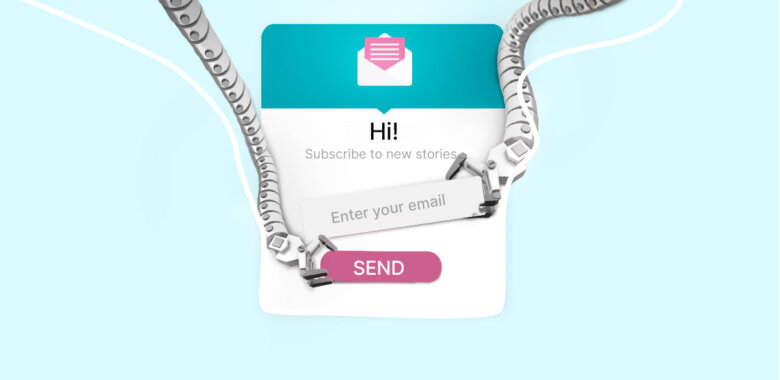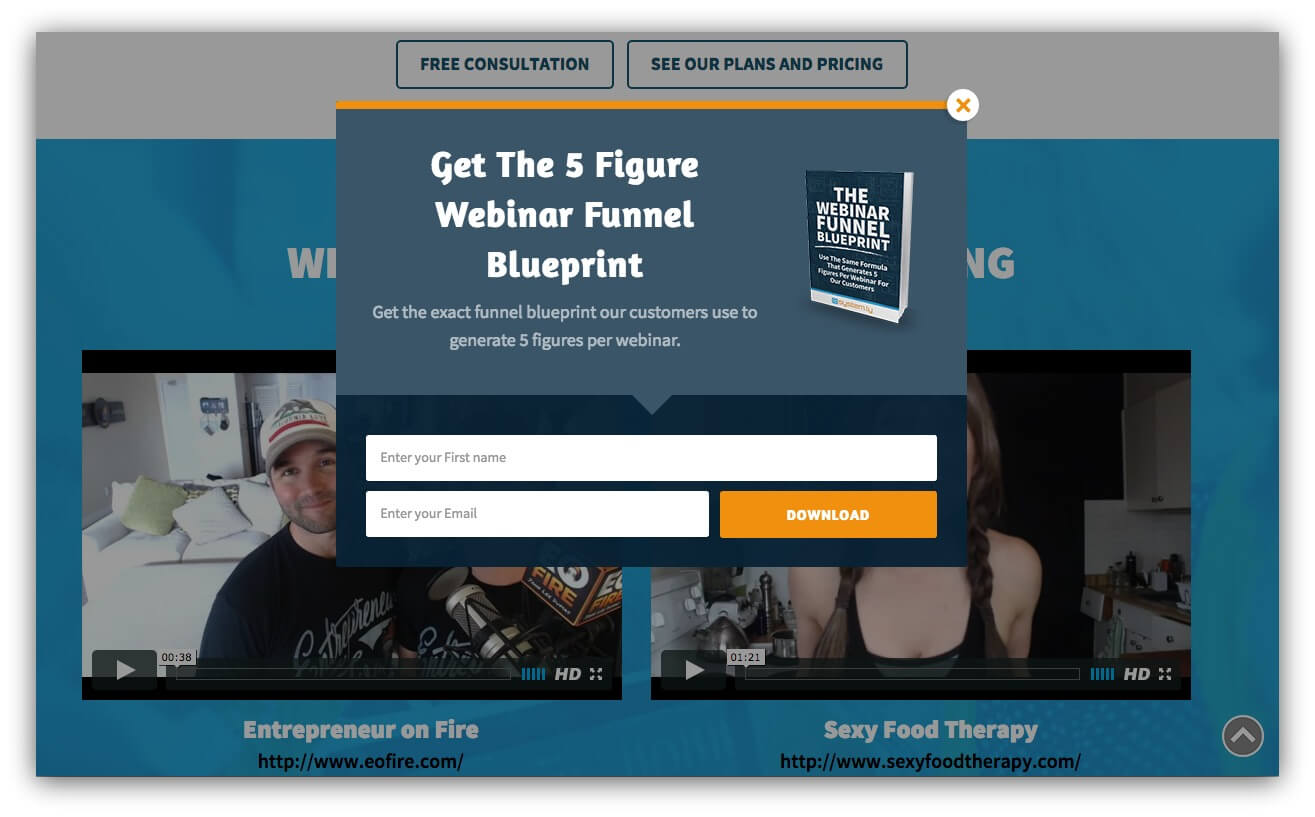Timing is everything
Finding the best time to display your pop-up is one of the keys to its success. Keep in mind that the majority of your visitors see your website for the first time. If you block their experience with a giant pop-up, you can spoil the impression forever. So, give them some time to get familiar with your content and start trusting you.
To find perfect timing, see Google Analytics and find out the average time on the page. It is appropriate to show a pop-up after 30-40% of that time has passed, or if the visitor scrolls a certain percentage of a page. For example, we at Selzy show the new visitors a pop-up inviting them to get the guide to email list building, when they have scrolled 50% of a blog article.
Make sure the pop-ups are relevant
Think about what else you can offer and how you can help the visitors to achieve their goals. They came to your website having a certain intent –– what else do you have for them? See the example below: a pop-up with an email course on marketing automation appears on the page with the marketing automation article. It perfectly complements the text and gives a deeper understanding of the topic.


























